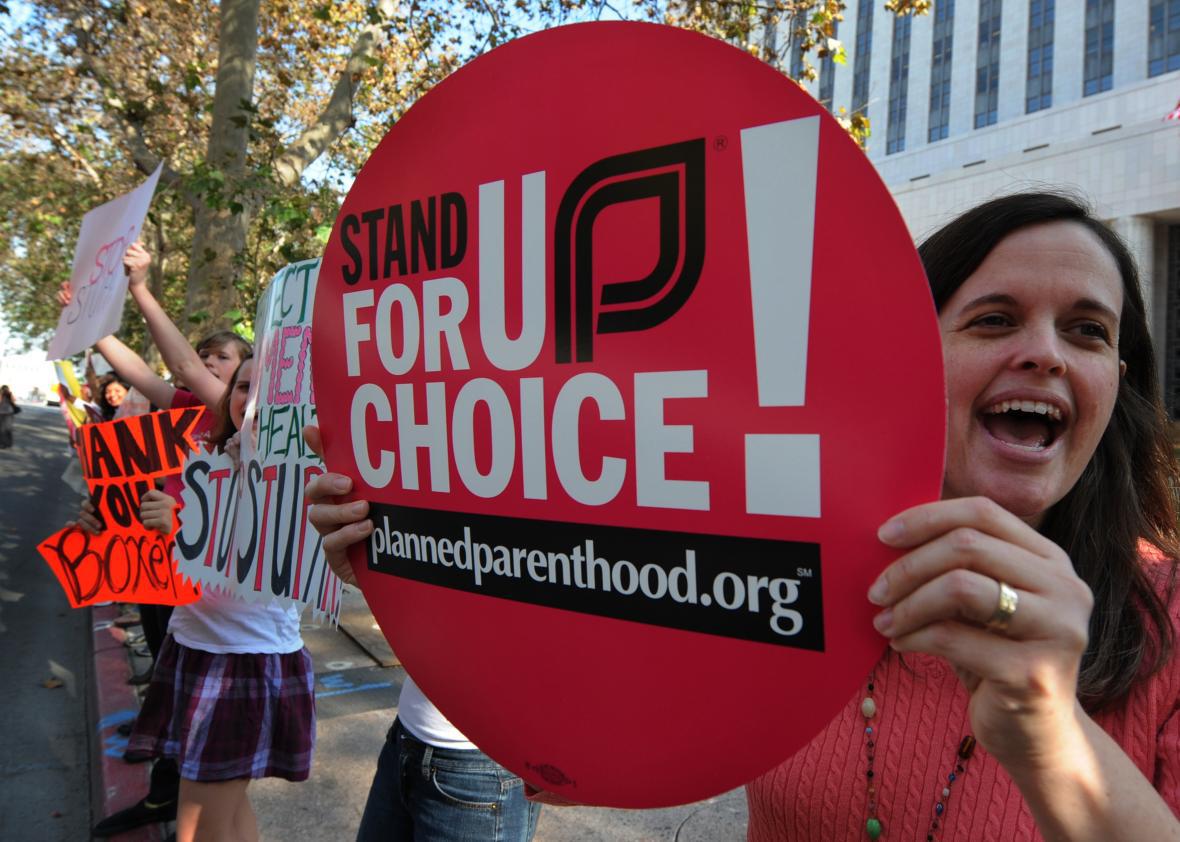California’s crisis pregnancy centers are founts of misinformation for women seeking abortions. A recent undercover report from NARAL Pro-Choice California found that they routinely lie about the physical and mental risks of abortion, use stalling tactics and falsehoods about “natural termination” to run out the legal abortion window, and disregard reports of abuse and health problems.
As of Jan. 1, these anti-choice CPCs, which often employ cunning branding and advertisements that make them seem like abortion clinics, will have a few more obstacles to skirt. Last Friday, California Gov. Jerry Brown signed into law the Reproductive FACT (Freedom, Accountability, Comprehensive Care, and Transparency) Act, which will require any center that’s not an actual licensed medical facility to disclose that fact to clients. It also mandates that any licensed reproductive health provider inform its patients of California’s programs for affordable birth control, abortion, and prenatal care.
“For years, women have been speaking out about being uninformed or deliberately misinformed about their reproductive health choices,” said Amy Everitt, state director of NARAL Pro-Choice California, in a statement. “ … This is what it looks like to respect women: empower us and trust us to make the best decisions for ourselves and our families.”
According to a directory run by CPC network Heartbeat International, California has nearly 350 CPCs, all of which will be subject to the state’s new law. Across the country, there are more than 4,000 CPCs, outnumbering abortion providers 3 to 1—a ratio that’s sure to increase now that increasingly severe state restrictions are causing abortion clinics to shut down.
A 2006 congressional investigation determined that CPCs consistently misinform patients that abortion leads to breast cancer, sterility, and suicide—yet many continue to receive federal funding. NARAL Pro-Choice California’s not-actually-pregnant undercover investigators, who visited 45 of the state’s CPCs, were encouraged to submit to an ultrasound at every CPC that had the necessary equipment. Despite seeing no fetus and hearing no fetal heartbeat, none of the CPC representatives encouraged the investigators to seek medical attention. In one case, the CPC employee pointed at the investigator’s IUD in the ultrasound, telling her that it was her “baby.”
Still, forcing CPCs to give honest medical information—and be clear about their intentions—is a thorny legal battle. California’s new law is bound to be challenged in court on First Amendment grounds; as Meaghan Winter writes, there’s a fair amount of precedent that could topple it:
In 2010 after Baltimore passed a law requiring CPCs to post signs disclosing that they don’t provide abortions or contraception, the Archdiocese of Baltimore sued the city; in 2011 a district court struck down the law, and after several appeals it is still not in effect. Around the same time New York City and Austin, Texas, required CPCs to post signage; Austin’s law was overturned, as were central requirements in New York’s law.
Winter recommends that, rather than try to regulate CPCs’ speech, states should target CPCs for consumer fraud (false advertising), for pushing a religious agenda while using taxpayer funds, and for practicing medicine without a license. Even then, though, each legal barrier has its own workaround, and CPCs have excelled at adapting to new constraints. California’s new law is a noble effort, but its efficacy will depend on the courts.
